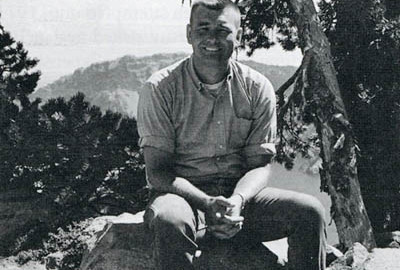I know you started some monitoring in ’78. By 1982 your work became the basis for some legislation.
Let me get to that in a round about way. Let me continue with the next question here. It is “How did Dick Brown support your work in his capacity as research biologist?”
I think Dick Brown did the best he could. He was very cognizant of the need for research on the lake. I think he promoted it. I view him as an important person at that time. He made it possible for Donaldson to come down there. The only problem is that the Park Service didn’t provide any support. As far as I know the only one who encouraged this research was Dick Brown. Nearly everyone else I knew down there in the late ’60s were indifferent about this research. To them it was some university people taking some samples. To them it didn’t really relate to the park’s main business of tourism and maintenance.
And then once you left in 1970, was that it?
There was no one [doing research]. Well, I shouldn’t say that. The first winter sampling was done by some OSU oceanographers in ’71. They went down and did some work on thermal properties of the lake. Their winter sampling took place in February, ’71, and this was the first time that any scientists had done sampling at Crater in the winter. I can’t recall their names now.
It’s amazing that they were even able to do it.
I don’t know anything about the actual experience, but it had to be treacherous. There was the threat of avalanches or hypothermia just being in that type of environment. If there had been an accident or somebody had gone overboard, or your boat got stalled or something, it could have been bad. You could die out there from exposure.
In terms of park staffing and infrastructure, it was about the worst possible time that I know of over the last 50 years.
I certainly admire their courage for doing it.


